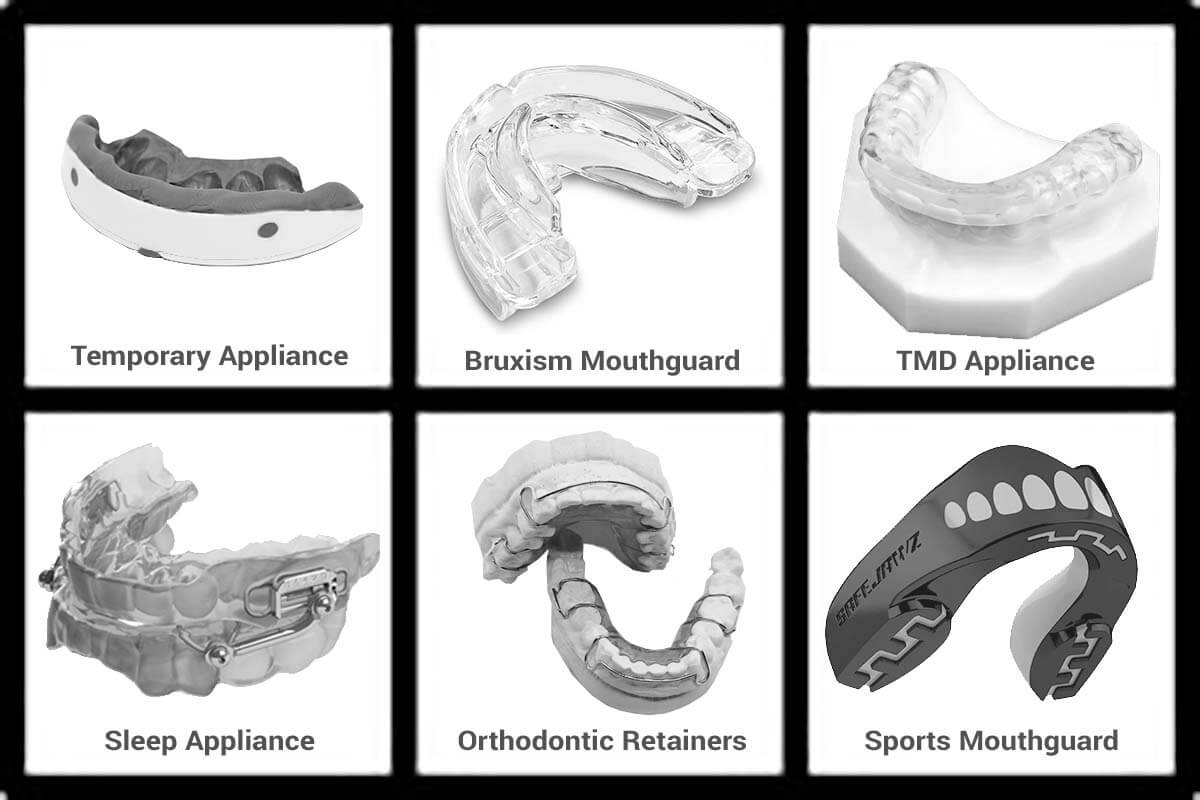Mouthguards and Orthodontics: What You Need to Know
Do you ever feel like your teeth are playing a high-stakes game of ‘dodgeball’ while wearing braces? Well, fear not! Mouthguards are here to save the day.
In the world of orthodontics, mouthguards act as the ultimate defenders, protecting your precious pearly whites from unexpected hits and bumps. They are an essential tool that can prevent injuries and ensure a smooth orthodontic journey.
In this guide, we will walk you through everything you need to know about mouthguards and orthodontics. From the different types of mouthguards available to tips on choosing the right one for your needs, we’ve got you covered.
So, let’s dive in and discover how mouthguards can be your best teammate during your orthodontic treatment.
Key Takeaways
– Mouthguards are important for protecting teeth and braces during orthodontic treatment.
– There are different types of mouthguards available, including traditional, boil-and-bite, and custom-fit options.
– It is important to choose a mouthguard specifically designed for orthodontic patients and with a high impact absorption rate.
– Proper care and maintenance of mouthguards is necessary to ensure their effectiveness and to avoid damage.
Importance of Mouthguards in Orthodontic Treatment
To ensure the protection of your teeth and braces during orthodontic treatment, it’s crucial to wear mouthguards. Orthodontic appliances like braces can make your teeth more vulnerable to injury, and mouthguards act as a barrier, preventing any damage that can occur during physical activities or accidental impacts.
When you have braces, your teeth aren’t only shifting but also more exposed due to the brackets and wires. This makes them more susceptible to damage from falls, collisions, or even a simple blow to the face.
Mouthguards provide cushioning and absorb the shock, reducing the risk of broken teeth, lacerations, and other dental injuries. They offer an extra layer of protection, ensuring that your teeth and braces stay intact throughout your orthodontic treatment. By wearing a mouthguard, you can continue to participate in sports and other physical activities without worrying about damaging your teeth or braces.
There are different types of mouthguards available, including stock mouthguards, boil-and-bite mouthguards, and custom-made mouthguards. Stock mouthguards are ready to use, but they may not fit properly, making them less effective. Boil-and-bite mouthguards are more customizable as they can be molded to fit your teeth after being softened in hot water. However, custom-made mouthguards, fabricated by your orthodontist, offer the best fit and protection as they’re specifically designed to accommodate your braces.
Types of Mouthguards for Orthodontic Patients
When it comes to protecting your teeth and braces during orthodontic treatment, it’s important to understand the different types of mouthguards available.
These mouthguards are specifically designed to fit over your braces and provide an extra layer of protection for your teeth, gums, and orthodontic appliances.
Here are three types of mouthguards that are commonly recommended for orthodontic patients:
– Traditional Mouthguards: These are the most common type of mouthguards and can be purchased at most sporting goods stores. They’re made of a flexible material that molds to your teeth and braces, providing a comfortable fit and adequate protection.
– Boil-and-Bite Mouthguards: These mouthguards are made of a thermoplastic material that softens when boiled. After boiling, you bite into the mouthguard to create a custom fit. This type of mouthguard offers better protection and comfort compared to traditional mouthguards.
– Custom-Fit Mouthguards: These mouthguards are made by a dental professional and provide the best fit and protection. They’re created using a mold of your teeth and braces, ensuring a precise fit that doesn’t interfere with your orthodontic treatment.
By understanding the different types of mouthguards available, you can choose the one that best suits your needs and provides the necessary protection for your teeth and braces during orthodontic treatment.
How to Choose the Right Mouthguard for Your Orthodontic Needs
Choose a mouthguard that provides the best fit and protection for your orthodontic needs. When it comes to selecting the right mouthguard, there are a few key factors to consider.
First and foremost, opt for a mouthguard specifically designed for orthodontic patients. These mouthguards are designed to accommodate braces and other orthodontic appliances, ensuring a comfortable and secure fit. Look for mouthguards that have a high impact absorption rate, as this will provide the necessary protection for your teeth and orthodontic appliances during physical activities.
Next, consider the different types of mouthguards available. While boil-and-bite mouthguards are commonly used, they may not be the best choice for individuals with braces. Instead, consider a custom-made mouthguard. These mouthguards are created specifically for your mouth, taking into account the unique shape and position of your teeth and braces. Custom-made mouthguards offer superior fit, comfort, and protection.
Additionally, it’s important to choose a mouthguard with proper thickness. A mouthguard that’s too thin may not provide enough protection, while one that’s too thick may be uncomfortable to wear. Consult with your orthodontist to determine the ideal thickness for your mouthguard.
Lastly, make sure to regularly clean and inspect your mouthguard for any signs of wear or damage. Replace your mouthguard as needed to ensure it continues to provide optimal protection.
Proper Care and Maintenance of Mouthguards for Orthodontics
Take proper care of your mouthguard to ensure it remains clean and effective for your orthodontic needs. Proper maintenance is crucial in order to prevent the buildup of bacteria and maintain the longevity of your mouthguard. Here are some important tips to keep in mind:
– Clean after each use: Rinse your mouthguard with cool water to remove any debris or saliva. Use a toothbrush and toothpaste to gently scrub the mouthguard, and rinse it thoroughly before storing it.
– Avoid high temperatures: Exposing your mouthguard to hot water or direct sunlight can cause it to warp or lose its shape. Always store it in a cool, dry place to maintain its effectiveness.
– Regularly inspect for damage: Check your mouthguard regularly for any signs of wear and tear, such as cracks or loose parts. If you notice any damage, it’s important to replace it immediately to ensure proper protection.
Tips for Using Mouthguards With Orthodontic Appliances
To ensure proper protection for your orthodontic appliances, it’s essential to wear a mouthguard throughout your treatment. Here are some tips to help you use mouthguards effectively with your braces or other orthodontic appliances.
Firstly, make sure you choose a mouthguard that’s specifically designed for use with braces. These mouthguards have a special design that accommodates the brackets and wires of your orthodontic appliances. They provide the necessary protection while also minimizing any potential damage to your braces.
Before inserting the mouthguard, rinse it with cold water to ensure cleanliness. It’s important to keep your mouthguard clean to prevent the buildup of bacteria and maintain good oral hygiene during your orthodontic treatment.
When putting on the mouthguard, be gentle and avoid placing excessive pressure on your braces. Take your time and ensure that the mouthguard fits snugly over your teeth and brackets. If necessary, you can ask your orthodontist for guidance on how to properly fit your mouthguard.

Remember to wear your mouthguard consistently, especially during physical activities and sports. Accidents can happen at any time, and wearing a mouthguard can significantly reduce the risk of injury to your teeth and braces.
Frequently Asked Questions
Can Mouthguards Be Used for Orthodontic Treatment Other Than Protecting the Teeth During Sports Activities?
Yes, mouthguards can be used for orthodontic treatment other than protecting the teeth during sports activities. They can also be used to help prevent damage to braces and other orthodontic appliances.
Mouthguards provide a protective barrier between the braces and the soft tissues of your mouth, reducing the risk of cuts, sores, and other injuries. Additionally, they can help alleviate discomfort caused by braces and reduce the risk of damage to the brackets and wires.
Can I Wear a Mouthguard if I Have Braces and Are Undergoing Orthodontic Treatment?
Yes, you can wear a mouthguard if you have braces and are undergoing orthodontic treatment. Mouthguards aren’t only used to protect your teeth during sports activities, but they can also provide additional protection for your braces.
Wearing a mouthguard can help prevent injuries to your lips, cheeks, and gums, as well as reduce the risk of damage to your braces.
It’s important to discuss with your orthodontist which type of mouthguard is best for you and your specific orthodontic treatment.
How Often Should I Replace My Mouthguard When I Have Braces?
How often should you replace your mouthguard when you have braces?
It’s important to understand the significance of regularly replacing your mouthguard while undergoing orthodontic treatment. By frequently replacing your mouthguard, you can ensure that it remains effective in protecting your teeth and braces. Over time, mouthguards can become worn out or lose their shape, compromising their ability to provide adequate protection.
Therefore, it’s recommended to replace your mouthguard every six months or as advised by your orthodontist.
Are There Any Specific Mouthguard Brands That Are Recommended for Orthodontic Patients?
There are several mouthguard brands that are recommended for orthodontic patients. These brands are specifically designed to provide maximum protection and comfort for those wearing braces. They’re made with durable materials that can withstand the pressure and movement of the braces.
It’s important to choose a mouthguard that fits properly and doesn’t interfere with your orthodontic treatment. Your orthodontist can recommend a specific brand that’s best suited for your needs.
Can I Wear a Mouthguard While Sleeping to Prevent Grinding and Clenching of Teeth?
Yes, you can wear a mouthguard while sleeping to prevent grinding and clenching of your teeth. It can help protect your teeth from the damage caused by these habits.
Make sure to choose a mouthguard that’s comfortable and fits well. Talk to your dentist or orthodontist about the best options for you. They can provide guidance on which type of mouthguard will be most effective in preventing grinding and clenching during sleep.
Conclusion
So, if you’re undergoing orthodontic treatment, it’s important to understand the significance of mouthguards. They provide protection and prevent any damage to your braces or appliances during physical activities.
There are different types of mouthguards available, so make sure to choose the right one for your specific needs.
Additionally, proper care and maintenance of your mouthguard is essential to ensure its effectiveness.
Remember these tips to use mou great post to read thguards effectively while wearing orthodontic appliances.
Keep your smile protected and continue your orthodontic journey with confidence!

Welcome to my website! I’m Declan Gaffney, a dedicated and passionate Preventive Dentist with years of experience in promoting oral health and providing top-notch dental care. I am thrilled to share my knowledge and expertise with you through this platform.
